Bone Fracture From a Car Accident in Ontario, Canada
Compensation for a Bone Fracture From a Car Accident in Ontario, Canada
Car accidents can have a devastating and lasting impact on the lives of those involved, especially when it comes to bone fractures. Every year in Ontario, thousands of people suffer from these types of injuries resulting from car crashes – with over 30% of all motor vehicle-related injuries being classified as such. These injuries can cause long-term health complications and greatly reduce an individual’s quality of life.
In this webpage, we will explore the cause of bone fracture, the most common types of fractures caused by car accidents, signs of bone fracture, their treatment options, potential financial costs associated with such injuries, and how seeking professional legal assistance can help victims suffering from bone fracture-related car accident trauma.

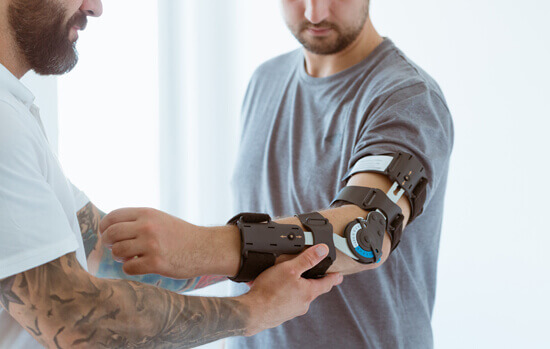
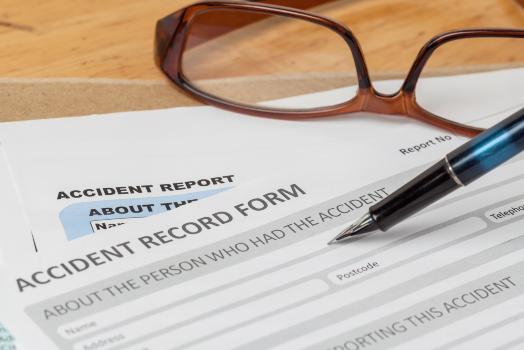
Bone Fracture Car Accident in Ontario, Canada
Causes of Bone Fractures in Car Accidents in Ontario, Canada
Car accidents can result in severe injuries; bone fractures are the most common type of injuries sustained in such incidents. A bone fracture, also called a broken bone, refers to a disruption in the continuity of a bone. It can range from a hairline fracture to a complete break, where the bone fragments separate.
In Ontario, a bustling province with a high volume of vehicles on the road, car accidents can lead to various types of fractures, ranging from minor to severe. Understanding the common causes of bone fractures in car accidents can help raise awareness about the importance of road safety and aid in prevention strategies.
The common causes of bone fractures in car accidents in Ontario include:
- High-Impact Collisions: High-impact collisions, such as head-on or side-impact crashes, are significant contributors to bone fractures in car accidents. The force generated during these collisions can subject the occupants to intense and sudden deceleration, leading to fractures in various body parts. Commonly affected bones include the ribs, arms, legs, pelvis, and collarbone.
- Ejection from the Vehicle: When a car accident occurs, individuals not properly restrained by seat belts or other safety devices may be ejected from the vehicle. Being thrown out of the car can result in severe impacts on the ground, nearby objects, or other vehicles, leading to bone fractures. Fractures resulting from ejection incidents can affect multiple body regions, including the skull, spine, arms, legs, and pelvis.
- Side-impact Collisions: Side-impact collisions, commonly known as T-bone or broadside accidents, pose a significant risk of bone fractures. These accidents occur when a vehicle is struck on its side by another vehicle, often at intersections or when one vehicle fails to yield. Side-impact collisions can cause fractures in the arms, legs, hips, and pelvis, as the occupants are particularly vulnerable to direct impact forces.
- Rollover Accidents: Rollover accidents involve a vehicle flipping onto its side or roof. These accidents can result in a series of impacts as the vehicle rolls, causing significant trauma to the occupants. The forces involved in rollover accidents can lead to fractures in various bones, including the skull, spine, arms, and legs. Moreover, occupants can sustain fractures by being trapped or crushed inside the vehicle during the rollover sequence.
- Pedestrian Accidents: Pedestrians involved in car accidents are at a high risk of sustaining bone fractures. When a vehicle strikes a pedestrian, the impact can be severe, causing fractures in multiple areas of the body. The legs, arms, pelvis, and spine are commonly affected in pedestrian accidents. The vulnerability of pedestrians emphasizes the importance of driver vigilance and adherence to speed limits and pedestrian right-of-way rules.
- Motorcycle Collisions: Motorcyclists are particularly vulnerable to bone fractures in car accidents due to the lack of protective barriers. The absence of a vehicle frame and the exposed nature of motorcyclists make them prone to severe injuries. Fractures in the legs, arms, pelvis, and spine are prevalent in motorcycle collisions, often resulting from the high-impact forces experienced during crashes with cars.
- Head-On Collisions: Head-on collisions are some of the most severe types of car accidents. These accidents occur when two cars collide head-on, and the impact can cause multiple bone fractures throughout the body. The legs, arms, ribs, and spine are particularly vulnerable to fractures in head-on collisions.
Several factors can increase the risk of bone fractures in car accidents. These include:
- Speed of the vehicle: The higher the speed, the greater the impact force and the more likely a bone fracture will occur.
- Type of collision: Side-impact and head-on collisions are more likely to result in bone fractures than rear-end collisions.
- Lack of safety features: Vehicles equipped with security features such as airbags, seat belts, and crumple zones are less likely to result in bone fractures than vehicles without these features.
- Age and health of the occupants: Older adults and individuals with pre-existing conditions such as osteoporosis are more susceptible to bone fractures in car accidents.
- Position of the occupant: Occupants seated in the front of the vehicle are more likely to sustain bone fractures than those sitting in the back.
Moreover, distracted driving, drunk driving, poor road condition, inadequate vehicle maintenance, and failure to wear a seatbelt also plays a great role.
Bone fractures are common injuries in car accidents in Ontario. Understanding the causes of these types of damage can help you take steps to prevent them.
If you are involved in a car accident and experience bone fractures, seek medical attention immediately. You can recover from your injuries and return to normal activities with proper treatment and rehabilitation.

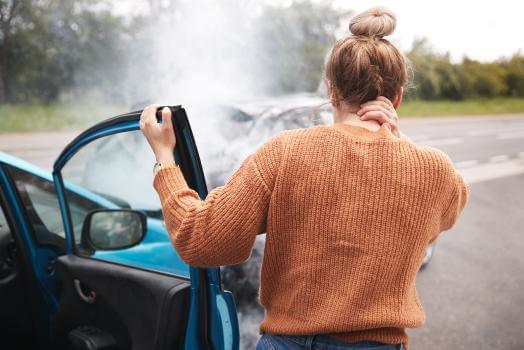
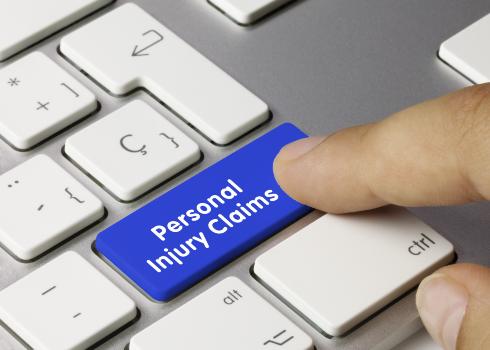
Fracture Car Accident Injuries in Ontario, Canada
Types of Fractures in Car Accidents in Ontario, Canada
Car accidents can lead to various bone fractures, resulting in significant injuries for individuals involved in the collision. Fractures are one of the most common injuries suffered by individuals involved in car accidents in Ontario.
We will discuss the different types of fractures that can occur in a car accident and what you should do if you have been injured.
- Open Fracture: An open fracture occurs when the bone breaks through the skin. This type of fracture is often accompanied by bleeding and can lead to infection. In a car accident, an open fracture can occur when a bone is smashed due to the impact of the collision. If you have an open fracture, seek medical attention immediately.
- Closed Fracture: A closed fracture is when a bone is broken, but the skin is not broken. This type of fracture is often accompanied by swelling and bruising. In a car accident, a closed fracture can occur when a bone is damaged due to the impact of the collision. If you have a closed fracture, seek medical attention immediately.
- Displaced Fracture: In a displaced fracture, the bone fragments are misaligned and do not line up correctly. These fractures often require surgical intervention to realign and stabilize the bone fragments, followed by a period of immobilization to promote proper healing.
- Comminuted Fracture: A comminuted fracture occurs when a bone is broken into several pieces. This type of fracture is often accompanied by severe pain and swelling. In a car accident, a comminuted fracture can arise when a bone is broken due to the impact of the collision. If you have a comminuted fracture, seek medical attention immediately.
- Greenstick Fracture: A greenstick fracture happens when a bone is partially broken. This fracture type is more common in children because their bones are more flexible. In a car accident, a greenstick fracture can occur when a bone is partially broken due to the impact of the collision. If you have a greenstick fracture, seek medical attention immediately.
- Stress Fracture: A stress fracture occurs when a bone is fractured due to overuse or repetitive stress. This type of fracture is more common in athletes. Still, it can also occur in individuals involved in a car accident. If you have a stress fracture, seek medical attention immediately.
- Hairline Fractures: A hairline fracture is a type of fracture with a small crack in the bone. It is also known as a stress fracture and can occur due to repetitive stress on the bone. Hairline fractures are not always visible on an X-ray and may require a CT scan or MRI to diagnose.
- Spiral Fractures: A spiral fracture is a type of fracture that occurs when a bone is twisted. This fracture type is common in car accidents where the victim’s body is bent due to the impact. Spiral fractures can be severe and may require surgery to fix.
- Compression Fracture: A compression fracture is a type of fracture where the bone is compressed, such as in the spine. Compression fractures can be caused by a sudden impact, such as a collision, or repetitive strain on the spine. Signs of a compression fracture can include pain, weakness, numbness, and difficulty moving the affected area.
- Avulsion Fracture: An avulsion fracture is a type of fracture where a small piece of bone is separated from the main bone due to the pulling of a tendon or ligament. This fracture is often caused by sudden strong movements, such as in a car accident where the body is jolted forward. Symptoms of an avulsion fracture include pain, swelling, and limited range of motion.
- Scaphoid fracture: A scaphoid fracture is a specific type of bone fracture that can occur in the wrist, specifically in the scaphoid bone. In Ontario, Canada, scaphoid fractures can be sustained as a result of car accidents. The scaphoid bone is located near the base of the thumb. It is vulnerable to fractures due to the impact and force transmitted through the wrist during a collision.
- Lumbar Fracture: A lumbar fracture is a specific type of spinal fracture that can occur in the lower back, specifically in the lumbar vertebrae. The lumbar region of the spine, located in the lower back, is vulnerable to fractures due to the intense force and impact experienced during a collision.
Car accidents can cause a variety of fractures, ranging from simple to severe. It is important to seek medical attention immediately if you suspect you have sustained a fracture in a car accident. Suppose you have been involved in a car accident in Ontario. In that case, you may be entitled to compensation for your medical expenses and other damages. Contact a personal injury lawyer for more information.


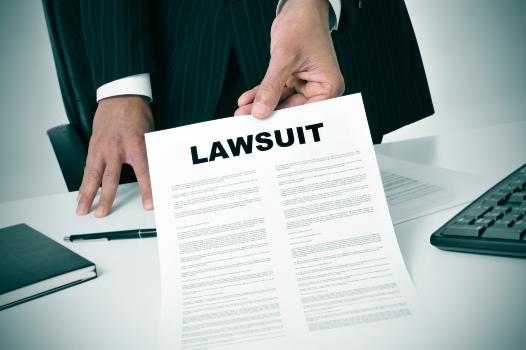
Scaphoid Fracture Car Accident in Ontario, Canada
Signs of a Scaphoid Fracture in a Car Accident in Ontario, Canada
Bone fractures are a common injury sustained in car accidents, and recognizing the signs of a fracture is crucial for timely diagnosis and appropriate medical intervention. In Ontario, a province with a significant number of vehicle collisions, understanding the common signs of bone fractures resulting from car accidents can help individuals involved in accidents seek immediate medical attention and facilitate their recovery process.
- Pain and Tenderness: One of the most prevalent signs of a bone fracture is pain at the site of the Injury. Individuals involved in car accidents may experience intense, localized pain that worsens with movement or pressure on the affected area. The pain can be sharp, throbbing, or constant. Tenderness to touch around the fractured bone is also common.
- Swelling and Bruising: Following a car accident, swelling and bruising around the fractured bone may develop. Swelling occurs due to the body’s inflammatory response to the Injury, while bruising (discoloration) results from bleeding under the skin. Swelling and bruising may take some time to become apparent, and they often accompany pain and tenderness at the fracture site.
- Deformity or Misalignment: A visible deformity or misalignment of the affected bone or joint may be evident after a car accident. The bone may appear crooked, bent, or out of place, indicating a displaced or dislocated fracture. Deformities can be more noticeable in fractures of the limbs, such as the arms or legs. They should be addressed urgently by a healthcare professional.
- Difficulty or Inability to Move: A fracture can impede a joint or limb’s normal range of motion. After a car accident, individuals may experience difficulty or an inability to move the affected area due to pain, swelling, or bone misalignment. It is important to avoid attempting to move the injured limb as it may exacerbate the damage and cause further complications.
- Crepitus: Crepitus refers to a grating or grinding sensation felt or heard when the broken bone fragments rub against each other. Individuals involved in car accidents may perceive crepitus as they move the affected limb or joint. Crepitus is often accompanied by pain and should be evaluated by a healthcare professional.
- Numbness or Tingling: In some cases, nerve injury can occur alongside a bone fracture in a car accident. Numbness, tingling, or a loss of sensation in the affected area may indicate nerve involvement. These sensations can indicate additional injuries and should be evaluated promptly by a healthcare professional.
- Limited Range of Motion: Fractures can restrict a joint or limb’s normal range of motion. After a car accident, individuals may experience a decreased ability to move the affected area, accompanied by pain and stiffness. This limited range of motion can significantly impact daily activities and should be assessed by a healthcare professional.
- Visible Deformity: A visible deformity or misalignment may be noticeable after a car accident, indicating a bone fracture. The affected bone or joint may appear crooked, bent, or out of place. This visible deformity suggests a displaced or dislocated fracture and should be assessed by a healthcare professional immediately.
- Muscle Spasms: Muscle spasms can occur due to a bone fracture in a car accident. The trauma to the bone and surrounding tissues can cause the muscles in the affected area to contract involuntarily. Muscle spasms may lead to increased pain and stiffness and can indicate an underlying fracture.
- Difficulty Bearing Weight: In fractures involving the lower extremities, such as the leg or foot, individuals may have an issue bearing weight on the injured limb. Attempting to weigh the affected area may cause significant pain and instability. This difficulty in walking or standing indicates a fracture may be present.
- Warmth and Redness: In some cases, the fractured area may feel warm to the touch, and the skin surrounding the fracture site may appear red. These symptoms indicate increased blood flow and inflammation in response to the fracture. Warmth and redness may accompany other symptoms like swelling and tenderness.
- Abnormal Sensations: Bone fractures can sometimes cause strange sensations in the affected area. Individuals may feel a tingling or pins-and-needles sensation, numbness, or a feeling of “electric shocks” near the fracture. These sensations can indicate nerve involvement and should be assessed by a healthcare professional.
- Discoloration or Pale Skin: In certain cases, a bone fracture can lead to changes in the skin coloration around the injured area. The skin may appear discolored, ranging from purple or blue (indicating bruising) to pale or white (showing compromised blood flow). These changes in skin color may develop over time following the car accident.
It is important to note that the presence of these symptoms does not solely confirm a bone fracture, as other injuries or conditions can also produce similar signs. However, any of these symptoms are present after a car accident in Ontario. In that case, it is essential to seek immediate medical attention for a thorough evaluation, accurate diagnosis, and appropriate treatment. Prompt medical intervention can help minimize complications and facilitate the healing process for bone fractures.

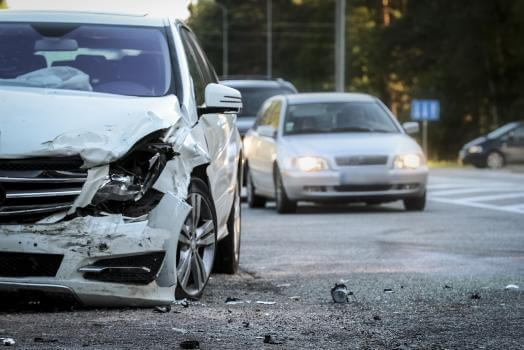
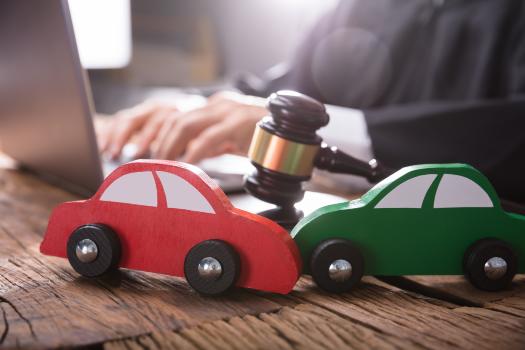
Bone Fracture Car Accident in Ontario, Canada
How to Avoid Bone Fractures in a Car Accident in Ontario, Canada
Bone fractures are a common injury in car accidents, but taking preventive measures can help reduce the risk of sustaining fractures or minimize their severity. In Ontario, a province with many road accidents, it is important to be aware of strategies that can help avoid bone fractures in car accidents.
Here is the guidance on how to prevent bone fractures and promote safety on the roads of Ontario.
- Wear Seatbelts Properly: Proper seatbelt usage prevents severe injuries, including bone fractures, during car accidents. Ensure that all occupants in the vehicle wear seatbelts correctly, with the lap belt positioned snugly across the hips and the shoulder belt crossing the chest and resting on the shoulder. Seatbelts help restrain occupants and prevent them from being thrown against hard surfaces in a collision, reducing the risk of bone fractures.
- Secure Child Passengers: If traveling with children, ensure they are appropriately restrained in child safety or booster seats suitable for their age, weight, and height. Properly installed and secured child restraints can significantly reduce the risk of fractures in young passengers during car accidents.
- Follow Speed Limits and Traffic Rules: Adhering to speed limits and obeying traffic rules is vital for maintaining control of the vehicle and minimizing the risk of accidents. Speeding increases the force of impact in a collision, making fractures more likely to occur. Driving responsibly and following traffic regulations can help prevent car accidents and protect yourself and others from potential fractures.
- Maintain a Safe Following Distance: Maintaining a safe distance from the vehicle ahead allows for adequate reaction time and minimizes the likelihood of rear-end collisions. Rear-end accidents can lead to fractures due to sudden impact and jarring motion. Leave enough space between your vehicle and the one in front, allowing for a safe braking distance.
- Avoid Distracted Driving: Distracted driving significantly increases the chances of being involved in a car accident. Distractions such as texting, talking on the phone, eating, or using electronic devices divert attention from the road, impairing reaction time and increasing the risk of fractures. Stay focused on driving and avoid engaging in activities that take your attention away from the task.
- Drive Defensively: Adopting defensive driving techniques can help minimize the risk of accidents and subsequent bone fractures. Stay aware of your surroundings, anticipate potential hazards, and be prepared to react accordingly. Defensive driving includes maintaining a safe speed, signaling lane changes, and being mindful of other drivers’ actions to avoid collisions that could result in fractures.
- Ensure Vehicle Maintenance: Regular vehicle maintenance, including checking tire pressure, brakes, and other essential components, helps ensure optimal performance and reduces the likelihood of accidents. A well-maintained vehicle is less prone to mechanical failures that could lead to collisions and fractures. Schedule regular inspections and promptly address any maintenance or repair needs.
- Avoid Driving Under the Influence: Driving under the influence of alcohol, drugs, or certain medications impairs judgment, reflexes, and coordination, significantly increasing the risk of accidents and fractures. Never drive if you are impaired. Utilize alternative transportation methods or designate a sober driver to ensure the safety of yourself and others on the road.
- Stay Alert and Avoid Fatigue: Maintaining alertness and avoiding fatigue while driving is crucial for preventing accidents. Fatigue can impair concentration and reaction time, making it more likely to be involved in a collision. Get enough rest before driving long distances, take breaks during extended trips, and avoid driving during hours when you would normally be asleep.
Preventing bone fractures in car accidents requires a combination of responsible driving practices, adherence to traffic rules, and ensuring vehicle safety. By wearing seat belts correctly, securing child passengers, following speed limits and traffic rules, maintaining a safe following distance, avoiding distractions, driving defensively, prioritizing vehicle maintenance, and refraining from driving under the influence, individuals can reduce the risk of bone fractures in car accidents in Ontario.

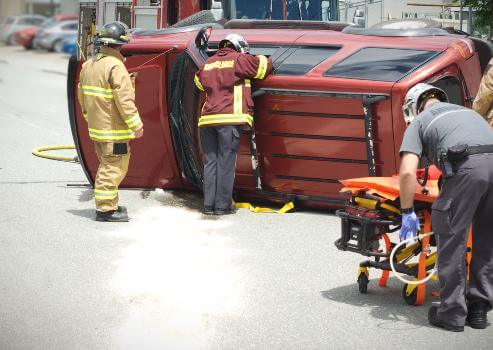

Lumbar Fracture Car Accident in Ontario, Canada
Entitled Settlement for a Lumbar Fracture Car Accident in Ontario, Canada
Determining a settlement for broken bones in a car accident in Ontario involves several factors and considerations. Each case is unique, and settlement amounts can vary based on the specific circumstances, the extent of the injuries, and the impact on the victim’s life.
Here are some key factors that can influence the settlement of broken bones in a car accident:
- The Severity of the Injury
- Medical Expenses
- Loss of Income
- Pain and Suffering
- Impact on Daily Life
- Future Damages
- Contributory Negligence
In general, however, settlements for broken bones in car accidents in Ontario range from $25,000 to $100,000 or more.
Here are some examples of recent settlements for broken bones in car accidents in Ontario:
- A woman who suffered a fractured leg in a car accident was awarded $100,000.
- A man who suffered a broken arm and a concussion in a car accident was awarded $200,000.
- A child who suffered a broken leg and a head injury in a car accident was awarded $300,000.
In Ontario, individuals who sustain a bone fracture in a car accident may be eligible for compensation through the province’s auto insurance system. The Statutory Accident Benefits Schedule (SABS) covers medical expenses, income replacement, and rehabilitation services. It is important to report the accident to your insurance company promptly and follow their guidelines for seeking medical treatment and submitting the necessary documentation.
It is always good to discuss with your lawyer to get the compensation you are entitled to. Get in touch with our recommended lawyer today!
*The laws pertaining to automotive injuries are complex and are contsantly evolving. The information on this website was not written by legal professionals and should not be considered legal advise. Please contact a professional personal injury lawyer serving Ontario for the most up to date and accurate information.






